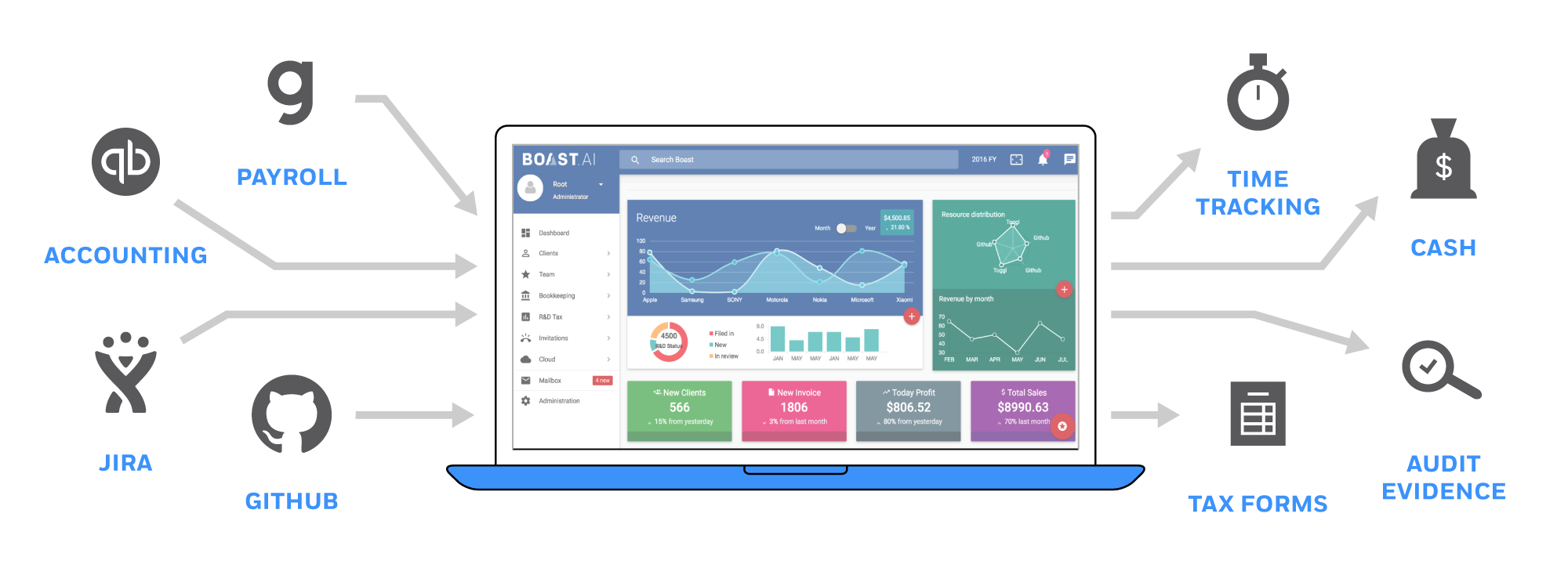News: Boast.ai raises $23M to help businesses get their R&D tax credits
Nobody likes dealing with taxes — until the system works in your favor. In many countries, startups can receive tax credits for their R&D work and related employee cost, but as with all things bureaucracy, that’s often a slow and onerous task. Boast.ai aims to make this process far easier, by using a mix of
Nobody likes dealing with taxes — until the system works in your favor. In many countries, startups can receive tax credits for their R&D work and related employee cost, but as with all things bureaucracy, that’s often a slow and onerous task. Boast.ai aims to make this process far easier, by using a mix of AI and tax experts. The company, which currently has about 1,000 customers, today announced that it has raised a $23 million Series A round led by Radian Capital.
Launched in 2012 by co-founders Alex Popa (CEO) and Lloyed Lobo (president), Boast focuses on helping companies — and especially startups — in the U.S. and Canada claim their R&D tax credits.
“Globally, over $200 billion has been given in R&D incentives to fund businesses, not only in the U.S. and Canada, but the U.K., Australia, France, New Zealand, Ireland give out these incentives,” Lobo explained. “But there’s huge red tape. It’s a cumbersome process. You got to dive in and figure out work that qualifies and what doesn’t. Then you’ve got to file it with your taxes. Then if the government audits you, it’s like a long, laborious process.”
After working on a few other startup ideas, the co-founders decided to go all-in on Boast. And in the process of working on other ideas, they also realized that AI wasn’t going to be able to do it all, but that it was getting good enough to augment humans to make a complex process like dealing with R&D tax credits scalable.
“The way I think to bootstrap a company is three things,” Lobo explained. “One, customers are looking for an outcome. Get them that outcome in the fastest, cheapest way possible. Two, when you’re doing that, you may have to do a lot of manual work. Figure out what those manual touch points are and then build the workflow to automate that. And once you have those two things, then you’ll have enough data to start working on artificial intelligence and machine learning. Those are the key learnings that we learned the hard way.”
So after doing some of that manual work, Boast can now automatically pull in data using tech tools like JIRA and GitHub and a company’s financial tools like QuickBooks and (soon) ADP. It then uses its algorithms to cluster this data, figure out how much time employees spend on projects that would qualify for a tax credit and automate the tax filing process. Throughout the process — and to interact with the government if necessary — the company keeps humans in the loop.
“So all our [customer success] team is engineers,” Lobo noted. “Because if you don’t have engineers they can’t inform the decision-making process. They help figure out if there are any loose ends and then they deal with the audits, communicating with the government and whatnot. That’s how we’re able to effectively get SaaS-like margins or more.”
Ideally, a tool like Boast pays for itself and the company says it has secured more than $150 million in R&D tax credits since launch. Currently, it’s also doubling growth year over year, and that’s what made the founders decide to raise outside money for the first time. That funding will go toward increasing the sales team (which is currently only four people strong) and improving the platform, but Lobo was clear that he doesn’t want to be too aggressive. The goal, he said, is not to have to raise again until Boast can hit the $30 to $50 million revenue mark.
Once fully implemented, Boast also effectively becomes a system of record for all R&D and engineering data. And indeed, that’s the company’s overall vision, with the tax credits being somewhat of a Trojan horse to get to this point. By the middle of next year, the team plans to offer a new product around R&D-based financing, Lobo tells me.
Over the years, the Boast team also focused on not just growing its customer base but also the overall startup ecosystem in the markets in which it operates, with a special focus on Canada. The Boast team, for example, is also the team behind the popular annual Traction conference in Vancouver, Canada (Disclosure: I’ve moderated sessions at the event since its inception). A thriving startup ecosystem creates a larger client base for Boast, too, after all — and coincidently, the team met its investors at the event, too.






